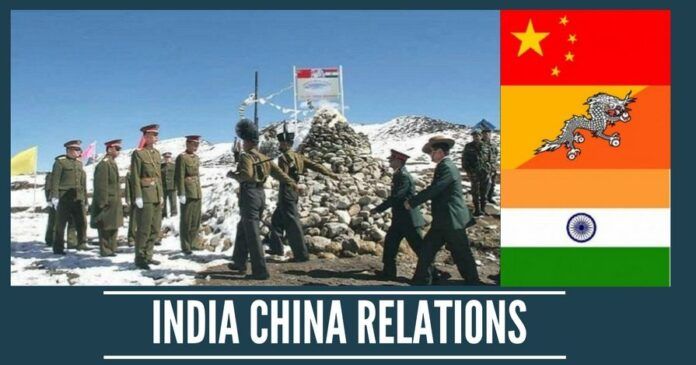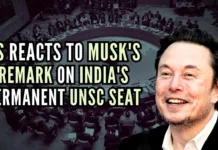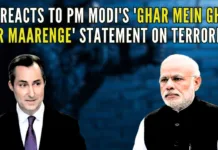
For India, the Dokhlam standoff has ended on a high note, but the problem of “salami slicing” by the PLA elsewhere is an ever-present threat
The Dokhlam standoff between China and India in the remote mountain heights of Bhutan had been under media attention for several weeks. It threatened to escalate into a full-scale war between the two Asian giants
The dispute was triggered by China’s People’s Liberation Army (PLA) Chinese army personnel who moved into Bhutanese territory to build a road on a thin slice of land which forms a tri-junction between China, Bhutan, and India. The road that the Chinese were attempting to build for movement of their armed forces was well inside Bhutan. India wasted no time and moved its forces into the area and stopped the Chinese on their track and refused to back down. By virtue of a decades-old friendship treaty, India is obliged to protect the safety and integrity of the Bhutanese state. Hence, the Indian military intervention in Bhutan.
China’s open threats of war with India –unprecedented in its crassness and lack of diplomatic finesse – stood out and stunned observers.
For India, this encroachment was mortally close to the Siliguri Corridor or “Chicken’s Neck” – a 30 KM wide tract of Indian land that connects the northeastern states with mainland India. India had pretty much no option other than stopping the Chinese from coming anywhere near the chicken’s neck. Hence it stood its ground, irrespective of the consequences.
The standoff lasted over two months and gave the world a unique perspective on the power play between the two countries. From the start, China took to an offensive media strategy, obfuscating the real issue of “salami slicing”– illegal grabbing of neighboring country’s land – and hoping India would be pressured to withdrawing its objections. The shrill language and open threats of war with India – something unprecedented in its crassness and lack of diplomatic finesse – stood out and stunned observers and diplomatic circles in world capitals.
India’s response on the other hand– as seen by the External Affairs Minister’s statement in Parliament – was well calibrated and dignified and stressed on a diplomatic resolution of the standoff while simultaneously refusing to withdraw.
China had insisted on India’s unilaterally withdrawal to resolve the standoff. However, when the disengagement was officially announced, both countries had agreed to withdraw simultaneously, albeit 150 meters from the disputed area and on the same day. Most importantly, India had its way and had stopped China’s road-building activity. A tame retreat by China, after all the bullying, huffing and puffing.
Whichever way the standoff is looked at, India seems to have the upper hand. For China, on the other hand, it has proved to be a major diplomatic and military embarrassment. Most importantly, it has spawned a reassessment by its other neighbors with whom there are current border disputes. For example, since the Dokhlam standoff, Indonesia has now openly challenged China on the South China Sea dispute.
. Japan’s decision to openly support India was a big win for India, as the efforts of three years of hard diplomacy were paying dividends now
The Dokhlam standoff has important consequences that will determine the future course of relations between the two countries. It will also greatly influence India’s relations with other nations that are wary of China, for India is the first power in recent times to stand up to China’s bullying. Thirdly, the standoff will be a new benchmark for negotiations on bilateral relations and border dispute, given that now India has an upper hand and has demonstrated it is politically willing and capable of considering the use of its military, if needed, to resolve border issues.
The reasons for India standings its ground against China are worth examining. Detailed review and analysis of the nearly 72 days eye-ball to eye-ball confrontation is indeed revealing. Three important tracks -military, diplomatic and economic –worked 24/7 to stitch together the disengagement agreement.
Unlike the Chinese media bluster and rude foreign ministry press briefings, India’s responses were mostly below the radar and off the press, yet dignified. India worked its diplomatic offensive by quietly briefing key world capitals and in return sought their support. Japan’s decision to openly support India was a big win for India, as the efforts of three years of hard diplomacy were paying dividends now. India even hinted economic sanctions – something that terrified the Chinese. Notably, permissions were denied for Chinese investments in the Pharma sector.
While all these measures helped, it must be reiterated that it was the confident Indian military that gave the political leadership the strength and guts to call China’s bluff. Sadly, the Indian and international press seemed to have ignored it.
Firstly, it is well known that India has been ramping up its military capabilities over the last decade or so. But the pace has accelerated after PM Modi took office. The northern borders have received a fair share of the new investments in military assets. The refurbished Indian military is now light years ahead and among the top fighting forces in the world.
Secondly, given the vulnerability of the Siliguri Corridor, India has long shored up its military and strategic assets in the area and is well entrenched. Countless exercises conducted over the years have kept the forces on their toes to expect the unexpected. So this border intrusion was by no means a surprise to the Indian Army which was well equipped and exercised to take on the adversary.
Thirdly, at the tactical level, the terrain in the Dokhlam valley itself was not in favor of the Chinese. The Indian Army, occupying the heights, had unhindered view of more than 30 KM into the valley into China. Any troop movement would not only be devoid of the surprise element but also be an easy target of the Indian army.
Fourthly, India quietly and swiftly puts its troops on operational alert all along the northern border. It moved its C-130J Super Hercules strategic aircraft to bolster its existing strategic fleet based at the Air Force Station in Panagarh, northwest of Kolkata. This put the 17 Strike Corps as well as high altitude acclimatized divisions (59 Division) in readiness and within few minutes of flying from the standoff scene.
Militarily, it was sending unmistakable signals to China that it was no easy pushover and that unlike 1962, it would have no hesitation in using its Air Force and other strategic assets if the circumstances warranted. Politically, this was a clear departure and demonstrated a new assertiveness that would brook no threat to the country’s integrity.
For India, the Dokhlam standoff has ended on a high note, but the problem of “salami slicing” by the PLA elsewhere is an ever-present threat. It would be foolhardy for India to let its guard down and drown itself in self-glory. For the PLA to venture into Dokhlam is nothing short of a glaring miscalculation and sheer stupidity. Round one to India.
Note:
1. The views expressed here are those of the author and do not necessarily represent or reflect the views of PGurus.
- The dossier debacle – Pakistan in the doghouse - December 3, 2020
- Economic impact of COVID-19 – The hard lessons - May 25, 2020
- Will Financial Inclusion make India a US$5 trillion economy? - July 16, 2019











[…] 1 of this series can be ‘accessed ‘ here. This is Part […]
Correct. There can be no “diplomacy” without real “military” power. Gandhi-Nehru be damned.